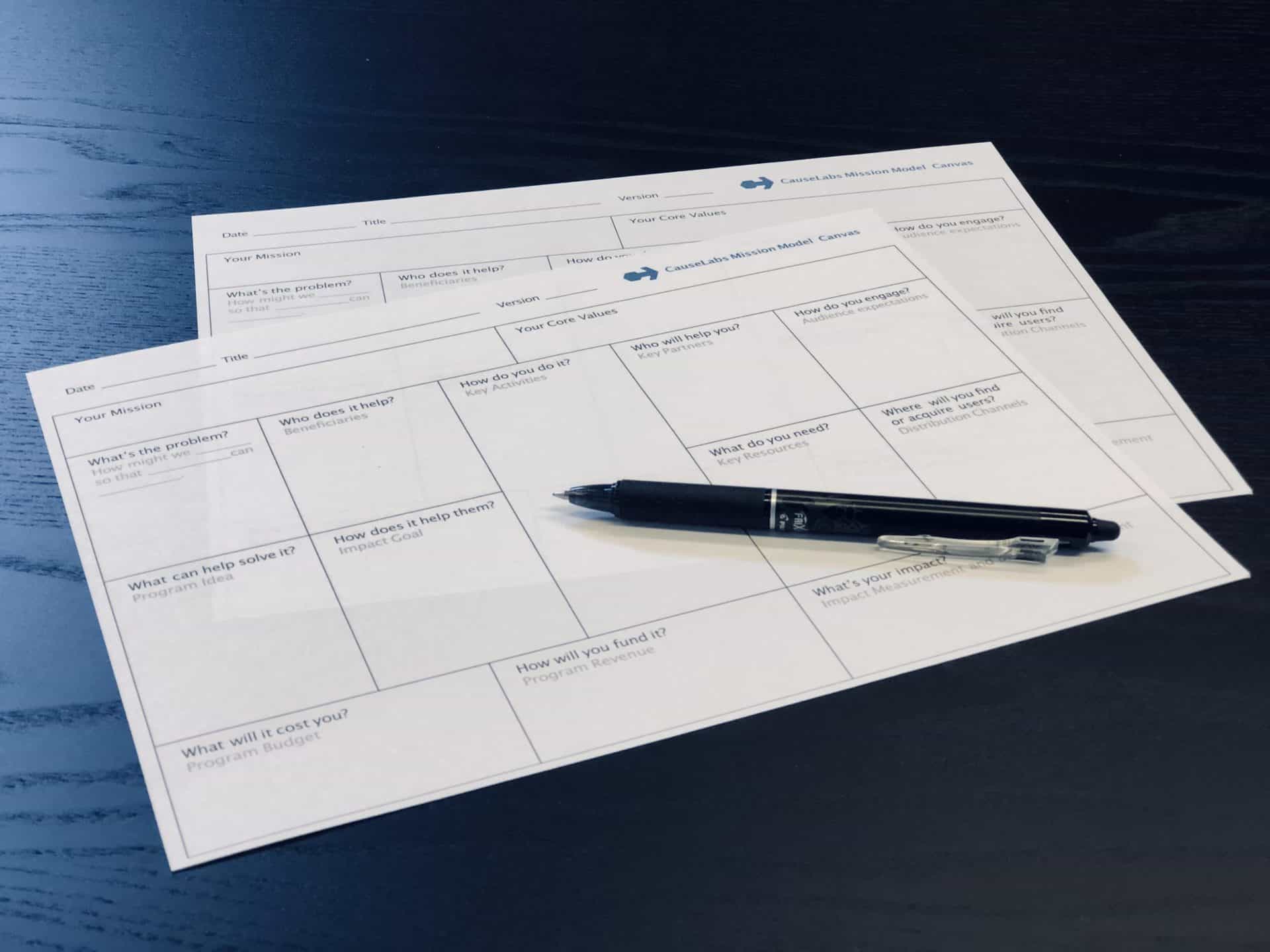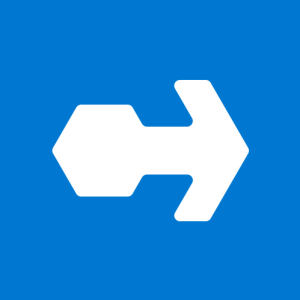You might be familiar with the Business Model Canvas. It stems from the Lean Startup and is used at Startup Weekend events and other programs. I like the idea of vetting an idea by determining if I can answer a series of business questions and the Business Model Canvas serves as a nice template to get you started. However, I encountered several challenges while using the template.
First, if you don’t get a proper introduction to the template, you might be confused about the order of the questions or blocks to fill in. Most of us tend to work from top left to bottom right, but the Business Model Canvas starts in the middle and is organized to house internal resources on the left and external resources on the right. While this can be helpful, I found that some answers could be both internal and external. Also, I prefer to share resources that are easy to use without much instruction. Secondly, as a Public Benefit Corporation and a social enterprise we measure every program against our mission and values. The Business Model Canvas does not provide visible space for this to stay at the forefront.
These were the two biggest challenges that prompted us to design a modified version for use at CauseLabs. We’ve created a Mission Model Canvas and geared it more towards nonprofits, social enterprises and corporate social responsibility teams for use in program design and implementation.
Using the Mission Model Canvas for Program Design
The benefit of using the Mission Model Canvas worksheet is that it asks all the right questions. If you go in-depth and fully answer these questions, you’ll have everything you need to validate an idea, answer grant applications, put together a pitch or proposal and even enough information to know how to test your prototypes and build a scalable MVP (Minimum Viable Program.)
One of the items we ask you to add is a version number. Seemingly unimportant, this helps with a few things. First, it tracks progress towards building a viable program. Second, it puts people in the mindset of iteration and discovery making it okay to fill out the Mission Model Canvas even if there are still answers to uncover. Lastly, it highlights that as ideas or programs evolve the answers change and you can identify if you need to pivot and also if you have what you need to pivot.
Think of the Mission Model Canvas as your business plan cheat sheet.
When I’ve introduced the Mission Model Canvas at workshops and presentations the most common question I receive is, “When is the right time to use the Mission Model Canvas?” I’ll share how I use the canvas. Every time I have an idea that is outside of our standard services or programs, I fill out a Mission Model Canvas worksheet. If I can’t fill in all of the blocks, I know that the idea is still too weak to carry forward. If I can fill in all of the blocks, but I know that some are weak answers, I’ll continue to explore the idea to get more detailed answers to my questions. While I continue my research and get more answers, I might find that my idea evolves or pivots into something new. At that point I’ll fill out a new worksheet, naming it the same name if the program is related and numbering it version 2.
Another question we receive is once you have a complete worksheet, when is the right time to revisit your answers and update your version? The answer to this question is, “it depends.” If you’ve identified that answers to your questions have changed (cost of goods has increased, your target audience or their methods of engagement have changed, or your funding opportunities have shifted) then it’s time to revisit your Mission Model Canvas.
If you want to go fast, go alone; if you want to go far, go together.
African Proverb
An interesting way to foster team collaboration and innovation is to give to each teammate a blank Mission Model Canvas. Verbally share an idea or problem statement and ask each person to fill out their own worksheet on how they would answer the questions for that idea or challenge. Then, come together as a group and share your answers. You may find that even amongst an aligned team there may be a varying array of ideas. Many people hold their ideas close to their chest. Remember, ideas should be freely shared because the key to innovation and program success comes from implementation.
When using the Mission Model Canvas, particularly for program design, it is critical to ensure that your answers all align with your mission and core values. Your answers should also relate to the people involved at each stage of the process; this includes both internal and external stakeholders. Just like any business model worksheet, you need to know your audience.
This is the first in a series of articles in which we’ll dig into the specifics of the Mission Model Canvas questions and explore how we use Human-Centered Design and other processes at CauseLabs to arrive at more robust solutions for important local and global challenges.

